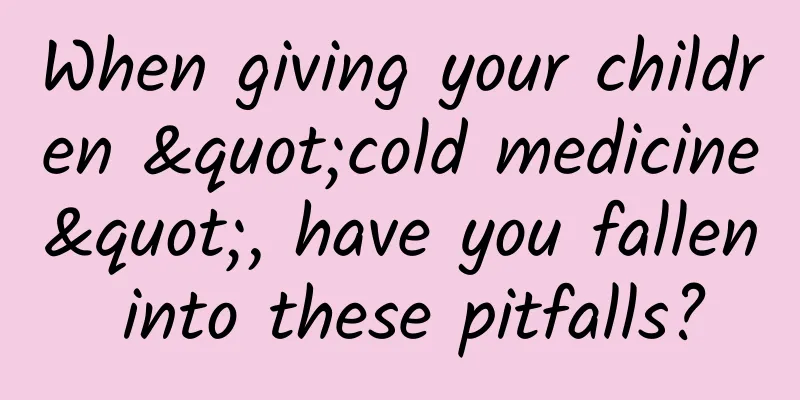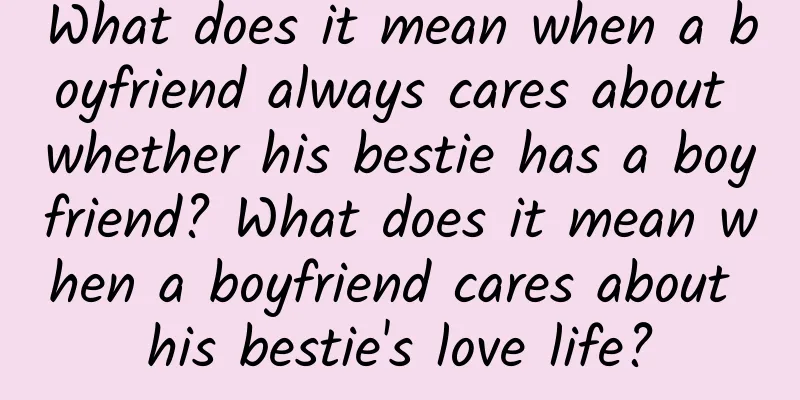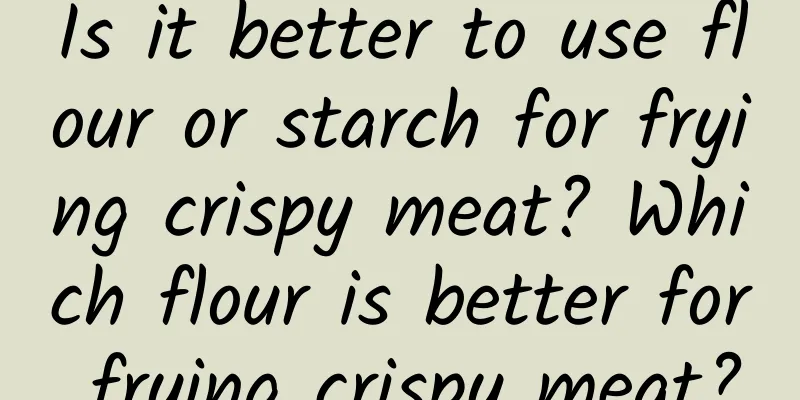When giving your children "cold medicine", have you fallen into these pitfalls?

|
The weather in early spring is warm but still cold, and seasonal flu and common colds are coming one after another. As the number of consultations increases, what I feel most deeply is that children take too many medicines! Many times, no medicine is needed or too much medicine is not needed. The common cold can heal itself, and the symptoms are mild and do not require the use of medicines. Sufficient rest and adequate fluid replenishment are important. If the symptoms are more obvious and affect the child's daily life, consider using drug intervention. Some parents become anxious when they find that their children have some cold symptoms, and they just want to take medicine quickly to get better. In our country, the way to obtain medicines is simple and convenient, and the restrictions are not strict enough. In this case, it is easy to abuse drugs. Unreasonable use of drugs not only fails to relieve the child's condition, but may also leave safety risks. For several common cold symptoms, have you also given medicine to your children in this way? 1. If my child has a cold, should he take oseltamivir? More than 90% of colds are viral infections and are self-limiting. There is currently no specific antiviral drug for the treatment of the common cold, so there is no need to use antiviral drugs. The earliest antiviral drugs used for influenza, adamantane and rimantadine, have been clearly highly resistant and are basically no longer used. Oseltamivir phosphate, which is now the most widely used, has been dubbed a "magic drug". For children with highly suspected and confirmed influenza, early use of neuraminidase inhibitors (such as oseltamivir phosphate) may reduce the incidence of severe illness and shorten the course of the disease by 1 to 2 days. However, oseltamivir is ineffective for the common cold. Influenza often has a high fever (39~40℃), chills, headaches, and body muscle aches. The common cold has no fever or mild to moderate fever, no chills, and few or no headaches and muscle aches. Parents should pay attention to the child's condition and have basic judgment. If the symptoms of influenza are obvious, they should take the child to see a doctor as soon as possible. It is not recommended to use oseltamivir phosphate on your own if there are only mild cold symptoms. 2. If I have fever and cough, should I take anti-inflammatory drugs? Fever and cough are symptoms of colds, and antibiotics are only considered for colds when there is a concurrent bacterial infection! While killing bacteria, antibiotics will also kill normal intestinal bacteria, destroy the microecological balance of the intestine, lead to intestinal flora imbalance, and thus affect the body's immunity and reduce disease resistance. The most commonly abused drugs for colds are antibiotics, which are what the public calls anti-inflammatory drugs. Developed countries have very strict management of the use of antibiotics, and our country's problems such as antibiotic resistance are also very serious. As a parent, you must have a string in your mind: do not use antibiotics if there is no clear bacterial infection! If it is determined to be a bacterial infection, it should be used reasonably. Some parents stop using it as soon as the child's symptoms have eased, or change it frequently when they feel the effect is not good. This can easily lead to the recurrence of bacterial infections and the development of drug resistance. Therefore, antibiotics should not be used when they should not be used, and they should be used in sufficient quantities and for a full course of treatment. Fever is a symptom of cold. Fever caused by viral infection will generally improve after 3 days. If the temperature exceeds 38.5℃ and the child is in poor condition, consider using antipyretics to improve the child's comfort. For cough caused by cold, as long as it does not affect daily life, no medicine is needed. Coughing is a process of expectoration and airway repair, which has the effect of keeping the respiratory tract open and preventing the spread of infection. Although it sometimes lasts for 1 to 2 weeks, it is generally not a big deal. The adverse reactions of cough suppressants, including expectorants, may be greater than the effect of cough suppressants and expectorants. Central antitussives may inhibit the cough center, causing sputum blockage and inability to cough up, which aggravates the infection. Children with excessive sputum and pulmonary congestion are prohibited from using them. Children with cough and sputum should have sufficient fluid intake to dilute the sputum. The humidity of the environment where the child lives should be appropriate (40-60%) and stay away from smoking environments. Remember that this medicine is worth using only if the benefits obtained after taking the medicine outweigh the potential risks. However, if the cough lasts too long and is too severe, the cause needs to be investigated, and the medicine used cannot be solved by cough suppressants and expectorants. 3. My child has a stuffy and runny nose, and there is cold medicine at home. Can he take it? Compound cold preparations, or what the public calls cold medicines, are the hardest hit by the abuse of cold medicines for children. Because they can quickly relieve catarrhal symptoms such as nasal congestion and runny nose, parents think that they are useful for treating colds, and they will use them on their children on their own next time they have a cold, no matter what symptoms they have. Cold medicines are basically compound preparations, with more than three ingredients, including decongestants, antiallergics, cough suppressants, expectorants, antipyretics and analgesics, and other single or fixed compound preparations. Not every one of these ingredients needs to be used, and not every one of them is suitable for children. Parents often use compound cold preparations containing antipyretic ingredients together with antipyretic drugs, or use compound cold preparations containing multiple symptoms such as fever and cough when the child only has a runny nose, or use Western medicines and Chinese patent medicines together to cause duplication of drug ingredients, etc., which can easily lead to drug overdose and ineffective use of drugs. On April 21, 2021, the National Medical Products Administration website released an announcement, deciding to revise the instructions for 14 common cold medicines, especially restricting their use by children. These 14 common cold medicines are as follows: Paracetamol and Aminophene oral solution, Paracetamol and Aminophene syrup, Paracetamol and Aminophene amantadine granules for children, Paracetamol and Pseudoephedrine chewable tablets, Paracetamol and Aminophene amantadine compound tablets for children, Paracetamol and Aminophene amantadine granules for children, Paracetamol and Aminophene amantadine granules, Paracetamol and Aminophene amantadine solution, Paracetamol and Aminophene amantadine compound tablets for children, Paracetamol and Aminophene amantadine oral solution, Paracetamol and Pseudoephedrine dispersible tablets (III), Paracetamol and Aminophene amantadine tablets for children, Paracetamol and Aminophene amantadine tablets for children, Paracetamol and Aminophene amantadine granules for children. The revision requirements mentioned in this announcement are as follows: Add a warning: "It is not recommended for parents or guardians to use this product on infants under 2 years old. It should be used under the guidance of a physician or pharmacist." Note: ① Add "It is not recommended for parents or guardians to use this product on infants under 2 years old on their own. It should be used under the guidance of a physician or pharmacist." ② Add "The drug should be used strictly according to the instructions and dosage to avoid overdose." ③ Change "Do not take other cold medicines with similar ingredients as this product at the same time" to "Avoid taking cold medicines with the same or similar active ingredients at the same time." From these revised requirements, we can see that the country is paying attention to and attaching importance to the safe use of cold medicines for children. Take the children's paracetamol granules as an example: it is a compound preparation with five ingredients: Acetaminophen 0.1g: antipyretic and analgesic, mainly used to reduce fever in children. Amantadine 0.04g: antiviral drug, severe drug resistance, uncertain efficacy. Artificial bezoar 4mg: clearing away heat and detoxifying Caffeine 6mg: Relieves headaches and other discomfort Chlorpheniramine maleate 0.8mg: antihistamine, relieves runny nose and sneezing, and improves symptoms in the short term. If the child only has a fever, acetaminophen can be used to reduce the fever if necessary. Other ingredients are redundant and may cause adverse reactions. In addition, some parents do not know that the so-called cold medicine also contains antipyretic ingredients. When the child has a fever, they use compound cold preparations and antipyretic medicines at the same time, resulting in the superposition of drug ingredients. For example, excessive acetaminophen can cause damage to the liver. Sometimes, children may take recurrent cold preparations and cough and expectorant medicines at the same time, which may also lead to duplication of medication. For example, the recurrent cold preparation acetaminophen contains pseudoephedrine, and the pediatric lung heat cough oral liquid contains ephedra. Using the two at the same time will invisibly lead to duplication of medication and the dosage will be superimposed, thus increasing the risk of adverse reactions. The best solution for nasal congestion and runny nose is to use saline nasal drops or saline or sea salt water to rinse the nasal cavity to clear out the mucus. Inhaling steam can also relieve nasal congestion symptoms. It is normal for the mucus to gradually change from clear to yellow and thick, and then gradually decrease. It does not mean that there is a bacterial infection when the mucus has color. However, coughing up yellow sputum may be complicated by bacterial infection. Severe nasal congestion may be caused by nasal obstruction, so the main thing is to clean the nasal mucus. Using a nasal aspirator or rinsing the nasal cavity with saline are both good choices. If the symptoms still cannot be relieved after rinsing the nasal cavity, it is necessary to consider whether there are problems with the physiological structure of the nose such as adenoids hypertrophy, and you need to see an otolaryngologist. It should be added that the early symptoms of some serious diseases may be similar to those of colds. Not abusing drugs does not mean not paying attention. Pay close attention to the child's condition during the child's illness. If the following situations occur, go to the hospital in time. 1. Fever and cough in infants under 3 months old 2. Fever lasts for more than 72 hours 3. Mental depression, loss of appetite, vomiting and diarrhea 4. Difficulty breathing or shortness of breath or wheezing when exhaling 5. Cough lasts for more than 3 weeks Our parents attach great importance to their children's food safety. When buying food for their children, they are aware of the ingredient list. Similarly, when giving children medicine, they should learn to read the instructions. Some parents will say that they can't understand the instructions, so they will read as much as they can understand, and consult doctors or pharmacists for the parts they don't understand. In daily work, we will meet many careful parents who will consult about the details of drug safety before giving their children medicine. We hope that parents can enhance their awareness of safe drug use, avoid using drugs if possible, use less drugs if possible, and try not to inject drugs if oral drugs can be used. ( Wang Hui, Chief Pharmacist, Dalian Women and Children’s Medical Center (Group)) |
<<: 4.26 National Malaria Day: Malaria prevention tips you must know when traveling abroad
>>: Staying away from secondhand smoke starts with you and me
Recommend
What to do if a pregnant woman catches a cold in early pregnancy
In today's society, if a woman in every famil...
What to do if you have gastroenteritis during pregnancy?
Most gastroenteritis is caused by improper diet. ...
Why is other people's Siri so fun? How to set fun commands for Siri?
Recently, everyone is having a lot of fun playing...
Maternity care knowledge
Nowadays, many people don’t know how to take care...
Effective methods for treating cervical erosion
I believe that most women are familiar with gynec...
What to do if you vomit a lot during the night while pregnant
Severe vomiting during pregnancy is a common phys...
At night, my vulva is very itchy.
For many women, once they encounter gynecological...
Is it necessary to start drug treatment when uric acid is high? When is the best time to start treatment?
Everyone must be familiar with the hazards of the...
What causes swollen and itchy vulva?
If a woman's vulva becomes swollen and accomp...
Pediatrician Mom: Tips for Holding Your Baby
The following article comes from Pediatrician Mom...
Is hydatidiform mole the cause of all females?
Hydatidiform mole is an abnormal pregnancy. If it...
What to eat to clean up uterine waste
Female friends must pay special attention to thei...
If myopia degree is greater than 600 degrees, can I not have surgery?
Xiao Chen (pseudonym), 28 years old this year, is...
What to do if you have a fever after taking birth control pills
Generally speaking, it is not easy to have fever ...









